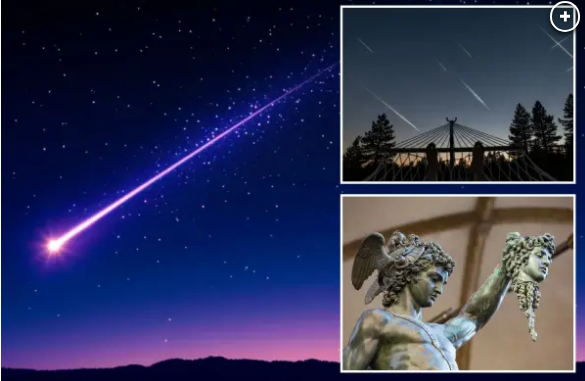One of the most anticipated celestial events of the year is lighting up the summer skies once again. The 2025 Perseid meteor shower officially begins tonight, kicking off weeks of dazzling skywatching opportunities across the Northern Hemisphere. Known for its fast, bright meteors and dramatic fireballs, the Perseids never fail to put on a spectacular show—and this year, conditions could be especially favorable in the days ahead. With the new moon arriving on July 24, skywatchers will get a rare chance to see dozens of meteors an hour under dark skies, long before the full moon brightens the night in August. Whether you’re an avid astronomer or a casual stargazer, now is the perfect time to look up and witness nature’s cosmic fireworks.
🌠 2025 Perseid Meteor Shower Guide
🗓 Dates & Duration
-
Active Period: July 17 – August 23, 2025
-
Optimal Viewing Window: July 18–28, thanks to low moonlight with new moon on July 24
🔭 Peak Night
-
Peak Night: August 12–13, during predawn hours (12:00 a.m.–4:00 a.m.)
-
Expect up to 50–100 meteors/hour at peak — though full moon interference may reduce this by 75%, leaving mostly bright fireballs visible.
🌕 Moonlight Impact
-
A full (Sturgeon) Moon on August 9 and a waning gibbous moon (~84% lit) on the peak night will dim fainter meteors
-
The earlier July 18–28 timeframe provides the darkest skies for a more satisfying show.
🌌 Viewing Tips
-
Peak viewing times: late night to pre‑dawn, especially between 2–4 a.m.
-
Choose a dark, wide-open sky, away from city lights. Lie on your back facing south (or overhead) and allow 20–30 minutes for eyes to adapt
-
Avoid bright screens—they ruin night vision!
💥 Fireball Show
🌠 Myth & Fun Facts
-
Named for the radiant near Perseus and also called the “Tears of St. Lawrence” for peaking near August 10 (St. Lawrence’s feast day).
-
Debris originates from Comet 109P/Swift–Tuttle, which orbits every ~133 years.
The Perseid meteor showers are named for the “golden shower” in which the Greek hero Perseus was conceived.Michael Evans – stock.adobe.com
🔭 Bonus Shower Overlap
📝 Summary Table
| Timeframe |
Conditions |
Expected Meteors |
| July 18–28 |
Dark skies, new moon |
Steady early meteors |
| Aug 12–13 |
Peak, but bright moon present |
Bright meteors only |
| Post-peak |
After Aug 16, waning moon, fewer meteors |
Some visible meteors |
🌍 Best Viewing Strategy
-
Go early: Aim for July 18–28 for darker skies and consistent meteor activity.
-
The peak is still worth it: Visit near Aug 12–13, even with moonlight—fireballs make it worthwhile.
-
Location matters: Find a dark site, allow time for your eyes to adjust, and look from midnight to dawn.



 The peak of the Perseids will not coincide with peak viewing conditions, as only the brightest shooting stars will be visible.Ирина Дьякова – stock.adobe.com
The peak of the Perseids will not coincide with peak viewing conditions, as only the brightest shooting stars will be visible.Ирина Дьякова – stock.adobe.com
Be the first to comment